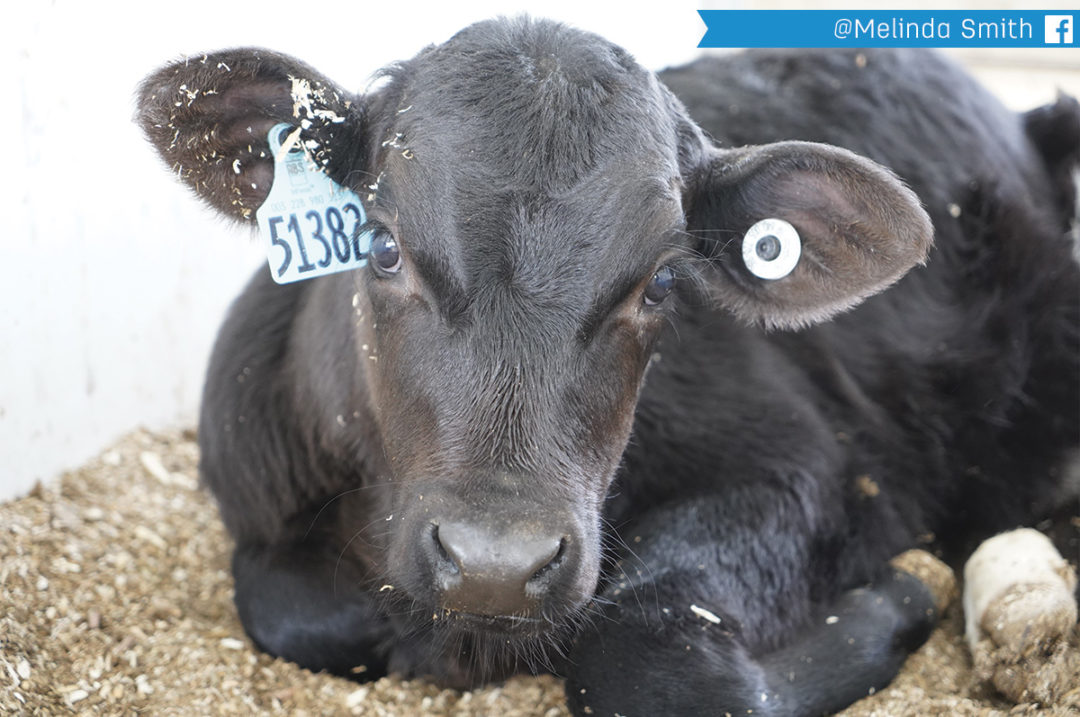Every 10 years, the cattle cycle occurs and is an important economic driver of the beef industry. Today, the beef industry is experiencing a reduction of its cow herd. This liquidation of mother cows is intensified by continued drought in cattle-producing regions such as Texas. The effect is fewer beef calves available for placement into feedlots.
Dairy producers can contribute their beef-on-dairy cattle to the cattle-feeding industry, and do so in a traceable, continuous and non-seasonal way. Depending on the region, these animals can also demand a premium compared to their full-bred dairy counterparts. In June 2023, Overland Stockyard in Hanford, California, reported that beef-on-dairy steer calves averaged $43 more per hundredweight (cwt) compared to purebred Holstein steer calves.
While cattle performance varies across operations, beef-on-dairy cattle typically display performance advantages for health and growth. Dairies with the right feedstuffs, equipment and facilities may profit from feeding these calves to differing endpoints (marketing as feeders, backgrounders or finished cattle).
To reinforce the potential value in the beef supply chain: A 2022 study shows that the eating quality of beef from beef-on-dairy cattle was more desirable than beef from conventional dairy cattle and comparable to the beef quality from conventional beef cattle.
Many dairy farms are already equipped to raise cattle for beef. And by now there is enough discussion around this topic that most dairy producers recognize it takes more than “feeding them with the heifers” to raise dairy cross calves successfully.
4 considerations for feeding beef-on-dairy calves
- Become acquainted with common beef industry metrics, what those values should be and set a goal for your operation. Documenting these metrics will help you and your nutritionist decide the best feeding and marketing strategies. Dairy producers are familiar with average daily gain (ADG), but other economic metrics include:
- Feed-to-Gain (F:G; amount of feed consumed per unit of gain)
- Cost of Gain (COG; feed, yardage, processing, medicine, interest and death loss divided by total gain during the feeding period)
- Transitioning from starter to a feedlot grower total mixed ration (TMR) diet can be a challenge for calves. If this transition is not given care and attention, it can create a growth setback at a time when you should be capitalizing on efficient gain. Keep in mind that a diet containing forage will require higher intakes to meet energy and protein requirements compared to a calf grain.
- Use feeding-related technologies to improve animal performance for both your dairy and beef-on-dairy calves. Ionophores should be used to mitigate rumen acidosis and improve feed efficiency. Implants have a proven record for increasing ADG and feed efficiency and are particularly beneficial for cattle types with limited genetic propensity for muscling.
- When choosing to feed and market your own crossbred calves, be aware of buyer and packer availability in your region. A survey conducted by our team found dairy producers cited marketing these animals as one of their top challenges. Be sure the market in your region will buy beef-on-dairy cattle and be sure to evaluate if there is a discount for cattle showing any dairy type.
If marketing beef-on-dairy crossbred calves to different segments of the cattle-feeding industry is the intention, understanding the challenges beef-on-dairy cattle may bring to feeders and cattle buyers is important.
4 realities of beef-on-dairy cattle in the feedlot
- Significant inconsistency in crossbreds between sources exist, and cattle buyers have a low tolerance for variation and the unknown. Not all beef sires are created equal when it comes to traits that are important to beef production. Traits like ribeye area, backfat and marbling are indicators of carcass quality, which will add retail value. Characteristics such as yearling height and maternal traits do little for the feeding value of that calf.
- Dairy cattle have a lower red meat yield compared to conventional beef cattle, and these packer discounts are sometimes applied to beef-on-dairy cattle. A recent study found that the dressing percentage (ratio of live weight to carcass weight) for beef-on-dairy cattle was 63% compared to 63.5% for conventional beef cattle. While the dressing percentages reported in this study were more similar than expected, beef-on-dairy cattle were found to have a greater percentage of bone and therefore still produced slightly less salable red meat.
- Early life nutrition and health play a significant role in lifetime productivity of both dairy and beef-on-dairy calves entering feedlots. Calves originating from a dairy operation have a more challenging start to their lives than conventional beef calves. They are weaned from milk much earlier and are introduced to full feed when they are still immunologically and behaviorally naive. Adequate colostrum intake and proper vaccination programs are necessary for building immunity and reducing respiratory illness – known to decrease feedlot performance and reduce carcass quality grade in fed cattle.
- The high rate of liver abscesses in dairy and beef-on-dairy calves results in a significant impact to carcass value. Prevalence of liver abscesses for straight-bred dairy cattle range from 50% to 80%; for beef cattle the prevalence is lower at 15% to 30%; with beef-on-dairy cattle falling in the middle at 40% to 60%. It is not fully understood why dairy and beef-on-dairy cattle show such high rates of liver abscesses; however, long feeding periods on high-concentrate diets that contribute to rumen acidosis and subsequent liver abscesses development is the commonly accepted cause. Gaps during early life nutrition and management could also contribute to this challenge.
The dairy and beef industry can collaborate to solve the challenges associated with feeding beef-on-dairy calves today. Mindful sire selection and early life nutritional management are two vital pieces imperative to the puzzle. Managing liver abscess prevalence and the health implications from the movement of calves through various management segments will require a whole-system approach.








